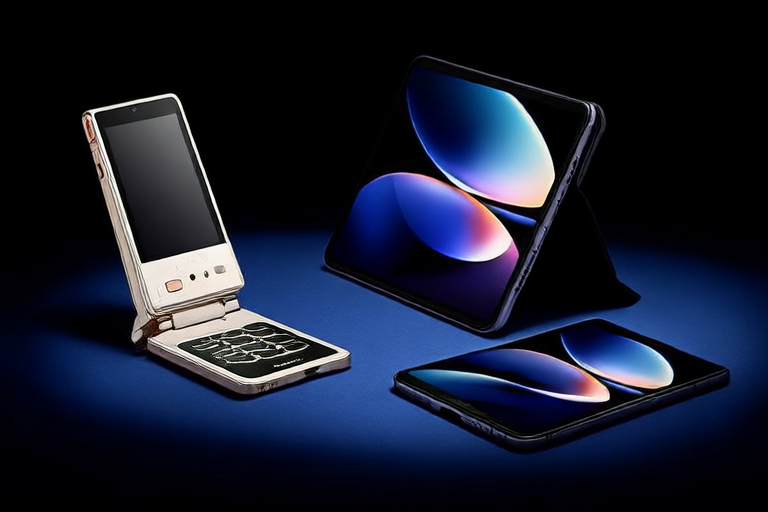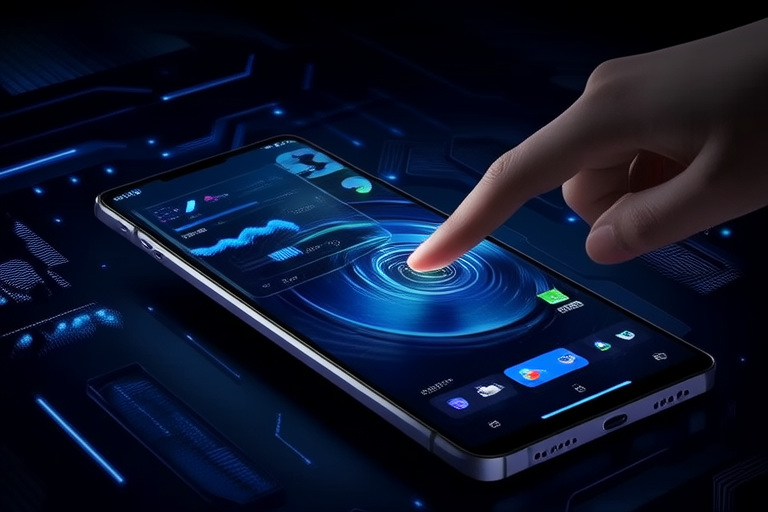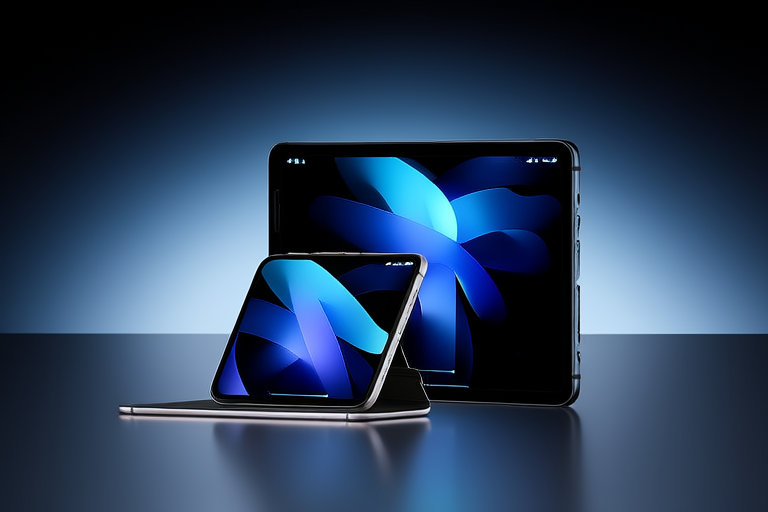Introduction
In the span of just a few decades, smartphones and tablets have transformed from niche gadgets into indispensable tools that shape nearly every aspect of modern life. From communication and entertainment to productivity and education, these devices have become extensions of ourselves, seamlessly integrating into our daily routines. The rapid evolution of smartphones and tablets has been driven by relentless innovation, turning them into powerful, multifunctional devices capable of tasks once reserved for desktop computers or specialized equipment. As we reflect on their journey so far, it becomes clear that their story is one of constant reinvention. But what lies ahead? Will future advancements continue to redefine how we interact with technology, or are we approaching the limits of what these devices can achieve? This article explores the historical development, technological breakthroughs, current trends, and potential future directions of smartphones and tablets, offering insights into what might come next in this ever-evolving landscape.
Historical Overview
The origins of smartphones and tablets can be traced back to the late 20th century, when mobile phones were primarily used for voice calls and text messages. The term “smartphone” gained traction in the mid-1990s with devices like IBM’s Simon Personal Communicator, which combined phone functionality with features such as email, calendar, and note-taking capabilities. However, it wasn’t until the early 2000s that smartphones truly began to take shape, thanks to innovations like Nokia’s Symbian OS and BlackBerry’s business-oriented devices, which introduced push email and physical keyboards.
Tablets, on the other hand, had a slower start. Early attempts, such as Apple’s Newton MessagePad in the 1990s, failed to gain widespread adoption due to high costs and limited functionality. It wasn’t until 2010, with the launch of the iPad, that tablets became mainstream. Apple’s sleek design, intuitive interface, and app ecosystem set a new standard, sparking a wave of competitors and solidifying tablets as versatile tools for work and leisure.
The real turning point for both categories came with the introduction of the iPhone in 2007. Apple’s revolutionary touchscreen interface and App Store model redefined user expectations, paving the way for Android and other platforms to follow suit. Over the years, milestones such as Samsung’s Galaxy series, Google’s Pixel line, and foldable devices like the Galaxy Fold have pushed boundaries further, creating a competitive landscape where innovation thrives.
Key Technological Advancements
The evolution of smartphones and tablets has been fueled by several key technological advancements that have dramatically enhanced their functionality and user experience. One of the most transformative innovations has been the development of capacitive touchscreens, which replaced resistive screens and stylus-based inputs. These responsive displays enabled intuitive gestures like swiping, pinching, and tapping, making devices more accessible and engaging.
Under the hood, processors have played a critical role in driving performance. Early smartphones relied on single-core chips, but today’s devices boast multi-core processors capable of handling complex tasks like gaming, video editing, and augmented reality applications. Companies like Qualcomm, Apple, and MediaTek have consistently pushed the envelope, ensuring that smartphones and tablets remain at the cutting edge of computing power.
Cameras have also undergone remarkable improvements, evolving from basic VGA sensors to sophisticated multi-lens setups with AI-driven features. Innovations such as optical image stabilization, night mode photography, and computational photography have turned smartphones into viable alternatives to professional cameras, democratizing content creation.
Artificial intelligence (AI) and machine learning have further elevated device capabilities, enabling features like voice assistants, facial recognition, and predictive text. Meanwhile, the rollout of 5G networks promises faster connectivity, lower latency, and the ability to support emerging technologies like autonomous vehicles and smart cities. Together, these advancements have not only expanded the utility of smartphones and tablets but also reshaped how users interact with the digital world.
Current Trends
Today’s smartphone and tablet markets are characterized by a blend of incremental refinements and bold experimentation. One of the most notable trends is the rise of foldable and flexible displays, exemplified by devices like Samsung’s Galaxy Z Fold and Z Flip. These designs aim to combine the portability of smartphones with the productivity benefits of larger screens, appealing to users who demand versatility without compromising convenience.
Augmented reality (AR) and virtual reality (VR) are also gaining traction, with manufacturers exploring ways to integrate immersive experiences into everyday devices. AR apps for navigation, shopping, and gaming are becoming increasingly popular, while VR headsets powered by smartphones offer affordable entry points into virtual worlds. As hardware continues to improve, these technologies hold immense potential to redefine entertainment, education, and remote collaboration.
Another significant trend is the growing integration of smartphones and tablets into Internet of Things (IoT) ecosystems. Devices now serve as central hubs for controlling smart home appliances, wearable tech, and connected cars, creating seamless interactions across multiple platforms. This interconnectedness reflects a broader shift toward personalized, context-aware experiences tailored to individual preferences and habits.
Design-wise, there is a noticeable emphasis on minimalism and sustainability. Manufacturers are adopting eco-friendly materials, reducing packaging waste, and designing products with longer lifespans. Additionally, software updates are being extended to ensure devices remain functional and secure for years, addressing concerns about electronic waste and planned obsolescence.
Challenges and Limitations
Despite their impressive progress, smartphones and tablets face several challenges that could hinder future developments. One major issue is hardware limitations, particularly regarding battery life and heat management. While processors and displays have become more powerful, they often consume significant energy, leading to shorter battery longevity and overheating issues during intensive tasks.
Software fragmentation poses another obstacle, especially in the Android ecosystem. With countless devices running different versions of operating systems, ensuring consistent performance and security updates remains a challenge. This fragmentation complicates app development and frustrates users who may encounter compatibility issues or delayed access to new features.
Privacy concerns are also mounting as devices collect vast amounts of personal data through sensors, microphones, and cameras. High-profile breaches and misuse of information have raised questions about how companies handle user privacy, prompting calls for stricter regulations and transparency.
Finally, environmental impacts cannot be ignored. The production and disposal of electronic devices contribute to e-waste, resource depletion, and carbon emissions. While some manufacturers are taking steps toward sustainability, the industry as a whole must address these issues to minimize its ecological footprint and meet consumer demands for greener products.
What’s Next?
Looking ahead, the future of smartphones and tablets is likely to be shaped by emerging technologies and shifting societal needs. Flexible displays, already seen in foldable devices, could evolve into fully rollable or stretchable screens, offering unprecedented levels of portability and customization. Imagine a tablet that can shrink to fit your pocket or expand to provide a cinematic viewing experience—such possibilities are no longer confined to science fiction.
Advanced AI capabilities will play an even greater role, enabling devices to anticipate user needs and adapt dynamically. For instance, AI-powered health monitoring could track vital signs in real time, alerting users to potential medical issues before symptoms arise. Similarly, natural language processing could make voice assistants more conversational and contextually aware, enhancing hands-free interactions.
Sustainability will continue to drive innovation, with manufacturers experimenting with biodegradable materials, modular designs, and renewable energy sources. Efforts to reduce e-waste and promote circular economies may lead to subscription-based models where users lease devices instead of owning them outright, ensuring proper recycling and reuse.
Potential shifts in user behavior and market demands could also influence future developments. As younger generations prioritize experiences over possessions, devices may focus more on facilitating social connections, creative expression, and immersive storytelling. Moreover, advancements in haptic feedback and sensory interfaces could blur the line between physical and digital realities, opening up new avenues for interaction.
Conclusion
The evolution of smartphones and tablets is a testament to human ingenuity and our insatiable desire for connection, convenience, and creativity. From humble beginnings as simple communication tools to their current status as multifaceted companions, these devices have continually adapted to meet changing needs and expectations. As we look to the future, emerging technologies promise to unlock even greater possibilities, pushing the boundaries of what we thought was achievable.
Yet, amidst all the excitement, it is crucial to remember the responsibilities that come with such power. Addressing challenges related to privacy, sustainability, and inclusivity will be essential to ensuring that these devices benefit everyone equitably. Ultimately, the true measure of success will not be how advanced our smartphones and tablets become, but how effectively they enhance our lives and empower us to build a better, more connected world. In doing so, they will not only shape the future of technology but also define the very essence of what it means to be human in a digital age.




